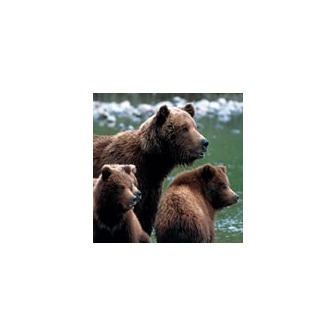Anchorage Alaska Public Lands Information Center





Alaska's Wild Legacy
The Alaska Centers support the appropriate use and enjoyment of Alaska's public lands and resources through "one-stop shopping" for information, trip-planning assistance, and resource education. The Alaska Centers are a system of information and education centers that help provide visitors and residents with meaningful, safe, enjoyable experiences on public lands and encourage them to sustain the natural and cultural resources of Alaska. These centers are nationally recognized for providing consistent, high quality services at all four locations.
Bears in Alaska
Alaska's bears have always been a popular attraction among visitors. Maybe it's because Alaska has all three different types of American bears! Alaska is home to the black bear (Ursus Americanus), the brown/grizzly bear (Ursus Arctos), and the polar bear (Ursus Maritimus). Each of these species can be viewed in Alaska. Find out more in this Bear Viewing Guide!
Our Three Bears
The Black Bear
The Black bear is the most common and abundant of the North American bears and can be found in all states except Hawaii. In Alaska they are typically seen in forested areas, though they are not exclusive to them. They are the smallest of the bears, standing at about 5 feet on their hind legs. One can easily distinguish them from other bears by their straight facial profiles and their sharply curved claws. As far as food goes, they are creatures of opportunity, just like any other bear, and will eat a wide range of things, from meat to berries to an unprepared camper's food.
The Brown/Grizzly Bear
Though the black bear is the most common, most people think of the Brown/Grizzly bear when they think of bears at all. In Alaska, they can be found in most places, except some islands in southeastern or southwestern Alaska. Technically speaking, the Brown Bear and the Grizzly bear are classified as the same species, though on Kodiak Island Brown bears refers to a distinct subspecies that are physically isolated and have a slightly different bone structure. Salmon is this bear's primary food source, and it is usually found where salmon are running. The Brown/Grizzly bear is larger than a Black bear, standing at about 8 feet on its hind legs. It can be distinguished by its prominent shoulder hump, its less-than-curved claws and its round face.
The Polar Bear
Though closely related to the Brown bear, there's no mistaking this bear, with its very large size, white color, and its strong carnivorous tendencies. The Polar bear is only seen in the northern hemisphere, and lives most of its life near sea ice, which it uses for hunting. Polar Bears stand about 10 feet tall on their hind legs, making them an especially large and intimidating predator. Polar bears hold a special place of pride in the heart of Alaskans, and their image can be seen just about anywhere. The Polar bear's most obvious physical attribute is its white fur, but otherwise they can be distinguished by their small ears and their teeth, which are specialized for a carnivorous diet.
- Also visit our Bear Safety for Kids page and watch the Bear Safety Video puppet show!
- If you are an educator please visit our Statewide Education Kits page for information on how to check out a Bear or Bear Awareness kit for use with your students.
Explore Related Categories







